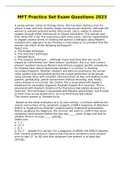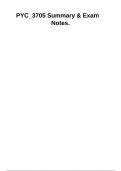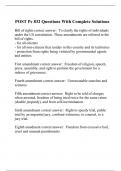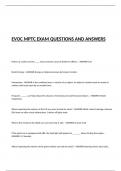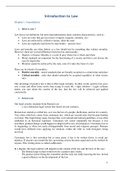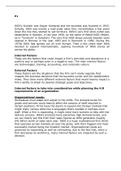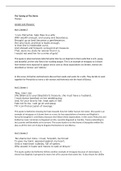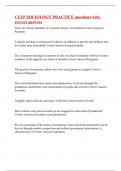Maxwell’s Equations
Electrodynamics before Maxwell
So far, we have encountered the following laws, specifying the divergence and curl
of electric and magnetic fields:
1
(i) E ρ (Gauss’s law for electricity),
ε0
(ii) B 0 (Gauss’s law for magnetism),
B
(iii) E (Faraday’s law)
t
(iv) B µ 0 J (Ampere’s law)
These equations represent the state of electromagnetic theory over a century ago,
when Maxwell began his work. They were not written in so compact a form in those
days, but their physical content was familiar. Now, it happens there is a fatal
inconsistency in these formulas. It has to do with the old rule that divergence of curl
is always zero. If you apply the divergence to number (iii), everything works out:
B
E B
t t
The left side is zero because divergence of curl is zero; the right side is zero by
virtue of equation (ii). But when you do the same thing to number (iv), you get into
trouble:
B µ 0 J ------------ (1)
the left side must be zero, but the right side, in general, is not. For steady currents,
the divergence of J is zero, but evidently when we go beyond magneto statics
,Ampere’s law cannot be right. There’s another way to see that Ampere’s law is
bound to fail for nonsteady currents. Suppose we’re in the process of charging up a
capacitor (Fig. 1). In integral form, Ampere’s law reads
B dl µ 0Ienc
In this case, the simplest surface lies in the plane of the loop - the wire punctures
this surface, so Ienc = I. Fine-but what if we draw instead the balloon-shaped
surface in Fig. 1? No current passes through this surface, and we conclude that Ienc
= 0! We never had this problem in magnetostatics because the conflict arises only
when charge is piling up somewhere (in this case, on the capacitor plates). But for
nonsteady currents (such as this one) “the current enclosed by a loop” is an ill-
defined notion, since it depends entirely on what surface we use. Remember that
the Amperian loop could be some contorted shape that doesn’t even lie in a plane.
Of course, we had no right to expect Ampere’s law to hold outside of
magnetostatics; after all, we derived it from the Biot-Savart law. However, in
Maxwell’s time there was no experimental reason to doubt that Ampere’s law was
of wider validity. The flaw was a purely theoretical one, and Maxwell fixed it by
purely theoretical arguments.
, How Maxwell Fixed Ampere’s Law
The problem is on the right side of Eq. (1) which should be zero, but isn’t. Applying
ρ
the continuity equation J and Gauss’s law, the offending term can be
t
rewritten:
ρ E
J ε 0 E ε 0
t t t
It might occur to you that if we were to combine ε 0 (E / t ) with J, in Ampere’s law, it
would be just right to kill off the extra divergence:
E
B μ 0J μ 0 ε 0 ---------- (2)
t
Such a modification changes nothing, as far as magnetostatics is concerned: when
E is constant, we still have ∇ x B = µ0J. In fact, Maxwell’s term is hard to detect in
ordinary electromagnetic experiments, where it must compete for recognition with
J; that’s why Faraday and the others never discovered it in the laboratory.
However, it plays a crucial role in the propagation of electromagnetic waves. Apart
from curing the defect in Ampere’s law, Maxwell’s term has a certain aesthetic
appeal: Just as a changing magnetic field induced an electric field (Faraday’s law),
so A changing electric field induces a magnetic field.
Of course, theoretical convenience and aesthetic consistency are only suggestive-
there might, after all, be other ways to doctor up Ampere’s law. The real
confirmation of Maxwell’s theory came in 1888 with Hertz’s experiments on
electromagnetic waves. Maxwell called his extra term the displacement current
density.
E
Jd ε0 --------- (3)
t

